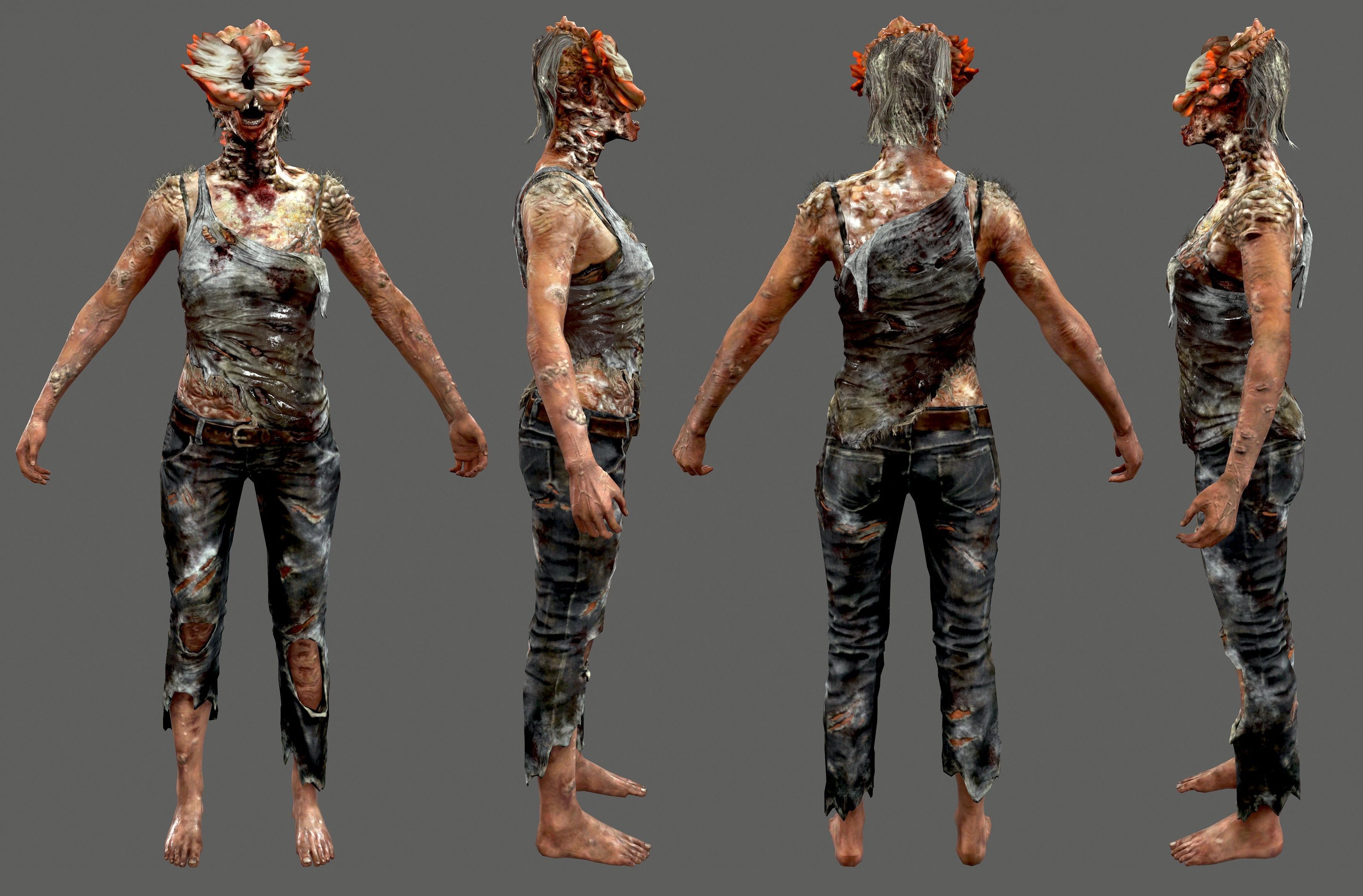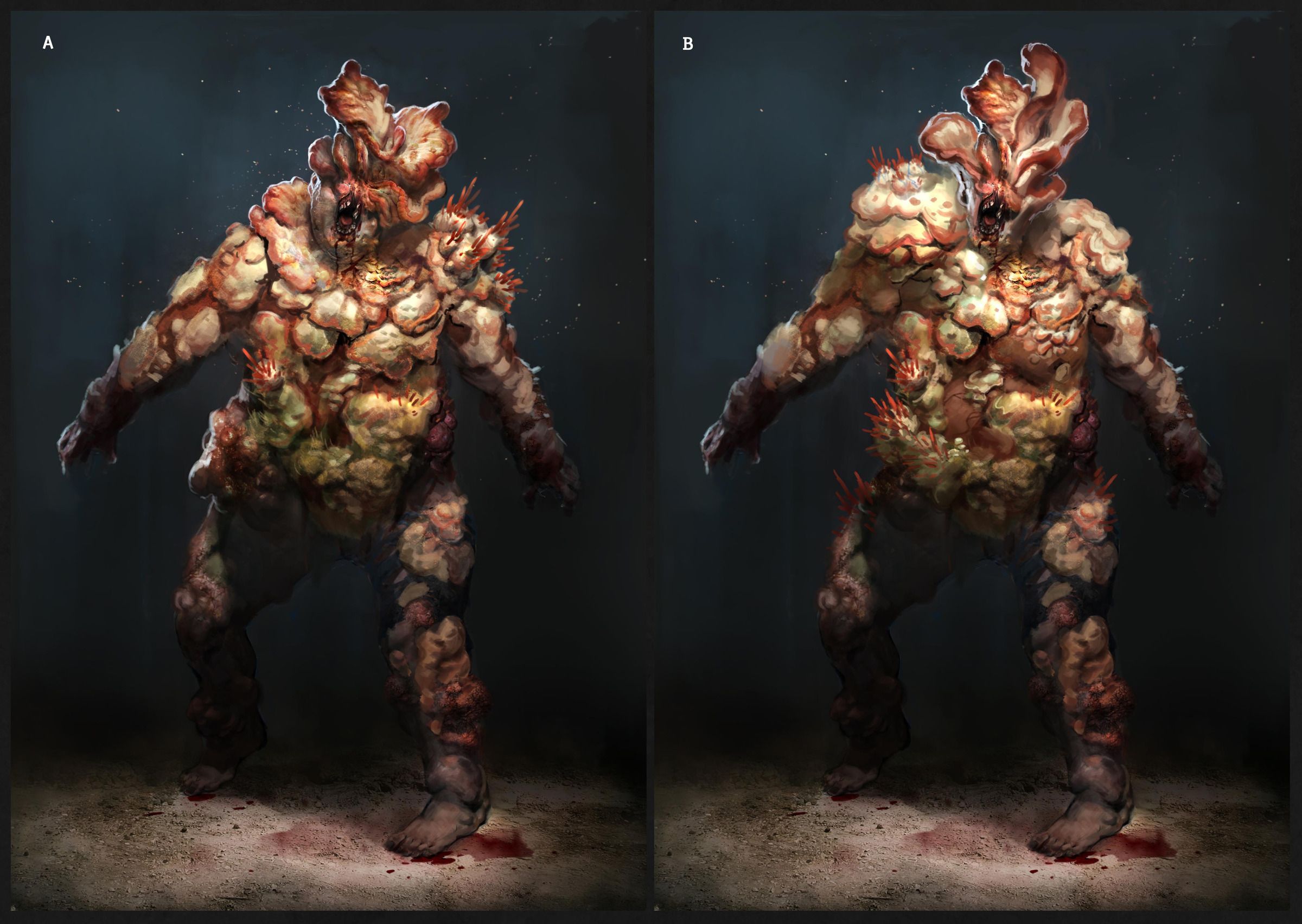Back in 2013, The Last of Us gave fans an all new take on the survival horror genre with their unique Infected enemies. Rather than undead zombies or people affected by some sort of bio virus, the "zombies" in The Last of Us are hosts for an infectious fungus known as the Cordyceps. Fans are familiar with the infected they've encountered already, but The Last of Us 2 is sure to bring about all new infected. Now is a great time for players, old and new, to refresh on the stages of infection from the old game and what new stages might show up.
For those that don't know, the Cordyceps virus progresses the longer it stays with the host, meaning that someone who has just been infected may be classified differently than someone who was infected for years. These different classifications are referred to scientifically as stages of infection, but survivors have given each stage a nickname which more accurately represents what the infected does. The Last of Us 2 has already revealed one new infected, but there's no reason it should stop there. There is a five year time skip between the two games, and five years is a lot of time for the virus to develop even further and create all new fearsome foes.
Runner (Stage 1)
The most basic form of infected is the Runner. A human recently infected by the virus will become a runner after just a few days. These infected still retain some level of humanity, as shown by the few Runners players come across which don't attack unless provoked, but it is clear that they fight a losing battle. The Runners are by far the most common infected players come across, and someone who is infected can stay a Runner for up to a year before progressing to the next stage. This means that most of the enemies encountered in The Last of Us have been infected within the last year. It is possible, though, that given the five year time gap between the two games, that less Runners will be present.
Stalker (Stage 2)
Once the fungus completely covers and takes over the host's brain, it spreads outward and the infected begins showing fungal growths from their face and other areas. This is the beginning of the transition into the much more well known form of a Clicker, but there is actually a brief stage in between. Stalkers have the vision and intelligence of Runners with all the ferocity that comes with later stages. Stalkers in The Last of Us are extremely uncommon, but not for lack of survivability. Stalkers will take cover, attempt to flank, and use other tactics that no other infected do. The low number of these infected implies that the stage is very short-lived. It is well-known that after about a year, an infected will become a Clicker, which means this stage must last weeks at best.
Clicker (Stage 3)
The Clicker is the most infamous stage of infected, and the flagship enemy of the series. The fungal growth has completely covered the infected's face, blinding them and forcing them to use echolocation instead of sight. The Clicker unsurprisingly clicks to accomplish this, and players must move extremely quietly to avoid being detected. The fungus also acts as armor, meaning they are more difficult to take down, and it even enhances their physical capabilities, making escaping a grapple with a Clicker nigh impossible. A Clicker can stay at this stage for several years, meaning there will likely be even more Clickers in The Last of Us 2.
Bloater (Stage 4)
Bloaters have been infected for an extremely long time, as it takes about 10 to 15 years to become a bloater. At this stage in the infection, the host is completely covered in fungal armor plating, still uses a form of echolocation to find its pray, and is capable of throwing bombs of spores at their opponents. Bloaters are incredibly rare, as the infection has only been present for 20 years in The Last of Us, and 25 years in The Last of Us 2, and most that were infected at the start of the outbreak have died already.
That said, an extra five years means that Bloaters may be far more common in the upcoming game, so players would do well to study up on their weaknesses. For starters, Bloaters are very slow, and are easy to outmaneuver. The true danger of a Bloater is their ability to throw spores, a problem which can be negated by use of fire.
Shambler (Stage ???)
The Last of Us 2 introduces a new enemy, the Shambler. It is unknown currently whether this enemy is a Stage 5 infected or just some kind of strange mutation of a Bloater, but Shamblers will likely share the Bloater's extreme susceptibility to fire, likely giving players a similar feel of dread when encountering one as well. They are capable of releasing a cloud of spores which burn the player's flesh and obscure vision. If environment has some sort of effect on the way in which the Cordyceps virus evolves, then it is possible that there could be many new types of infected beyond this. More will likely be revealed ahead of the game's release.
That is all of the currently known stages of infection that will be present in The Last of Us 2, but the possibility of further types of infected cannot be ruled out. Given that the outbreak happened 25 years ago at the start of this new game, it is theoretically possible that someone could have been infected for a quarter of a century, and since a Bloater only takes 10 to 15 years to cultivate, that is a frightening thought. That said, the infected haven't been very much of a focus in trailers for The Last of Us 2, with those instead focusing on a mysterious faction of human enemies.
The Last of Us 2 is expected to release on May 29, 2020, for PS4.






